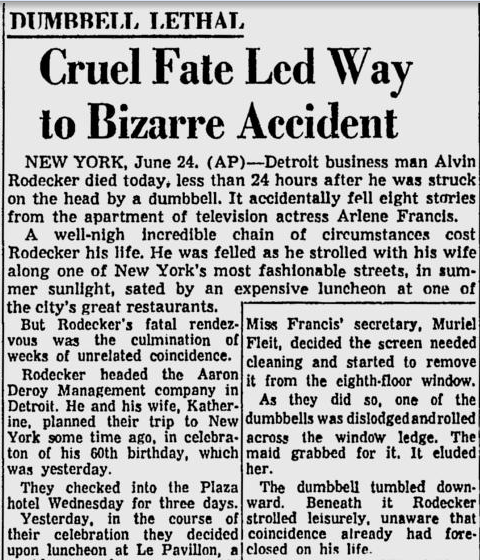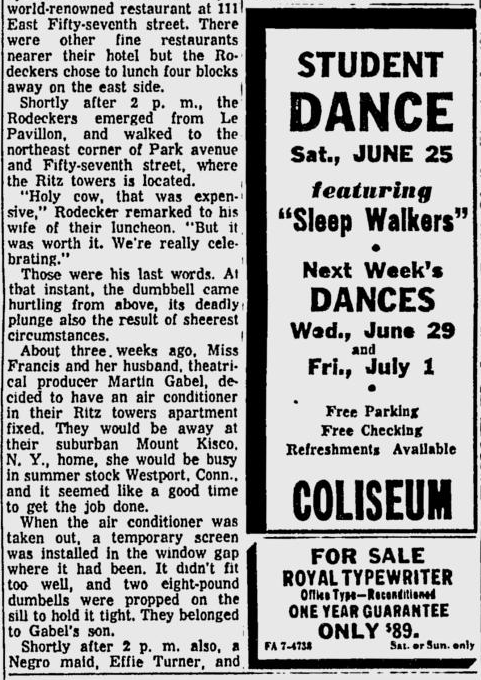Death
Atomic Survival Jacket
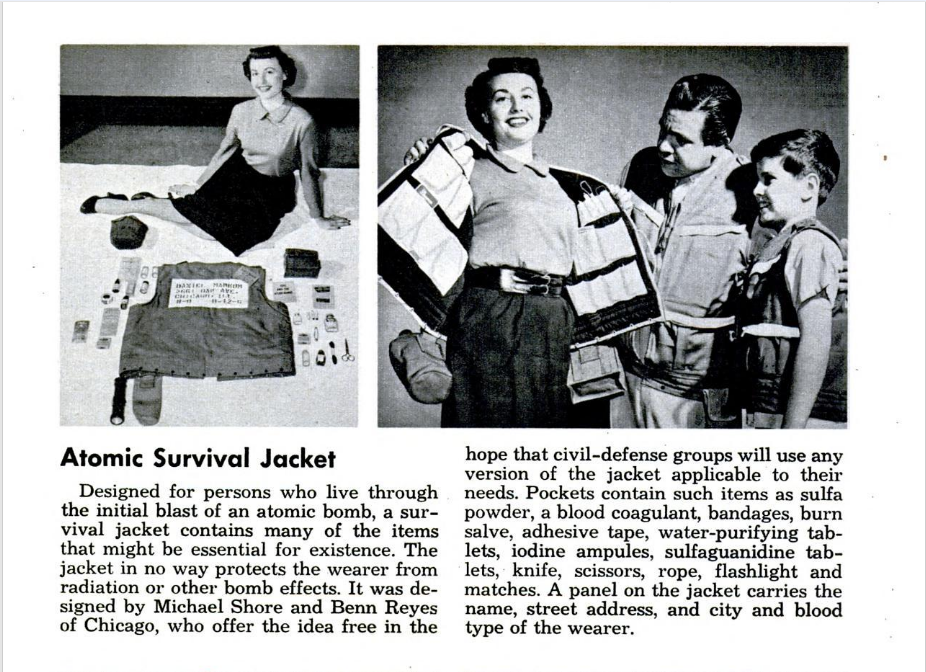
Source
Posted By: Paul - Thu Jun 17, 2021 -
Comments (4)
Category: Death, Inventions, War, Atomic Power and Other Nuclear Matters, 1950s
The Bisga Fluid Man
He's three-months dead but still looking good, thanks to Bisga embalming fluid!The ad ran in funeral trade magazines such as The Sunnyside, circa 1902 and 1903.

source: researchgate

source: cult of weird
The historian Jani Scandura offers some commentary about the ad in her article "Deadly Professions: 'Dracula,' Undertakers, and the Embalmed Corpse".
But in appearing to reaffirm middle-class markings through embalming, the Bisga advertisement reveals a more ominous truth: because of the laws regulating the use of corpses, the apparent gentleman's body most certainly belonged to an individual who had been destitute. He simply was remade to appear middle class.
Posted By: Alex - Tue Jun 08, 2021 -
Comments (3)
Category: Death, Advertising, 1900s
The Philadelphia Resurrectionists
Jefferson Medical College is still extant. Not sure if their literature highlights this incident.Source: The Boston Weekly Globe (Boston, Massachusetts) 19 Dec 1882, Tue Page 5
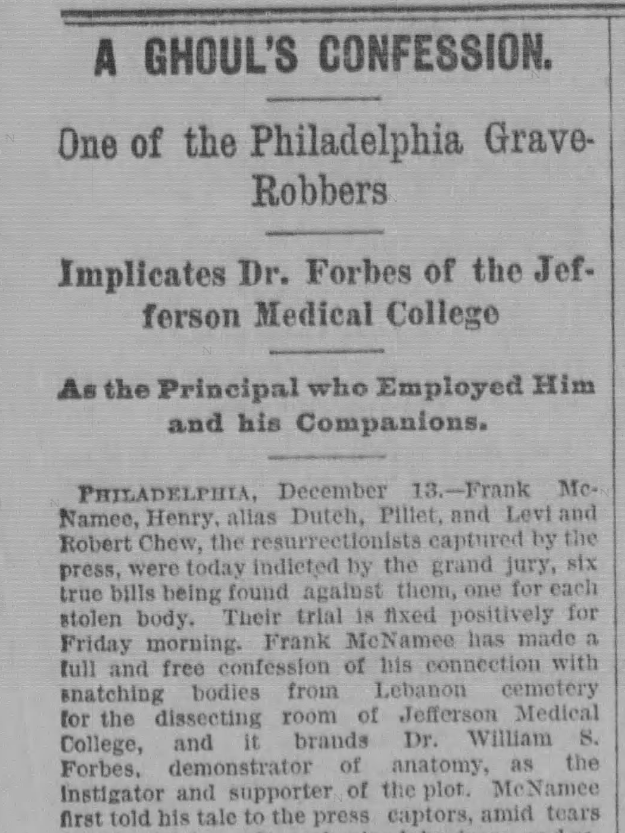
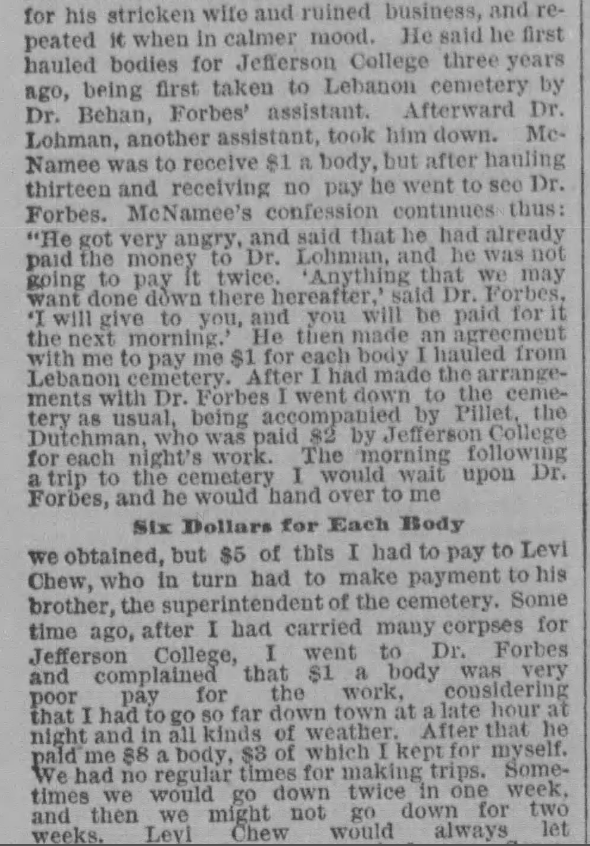
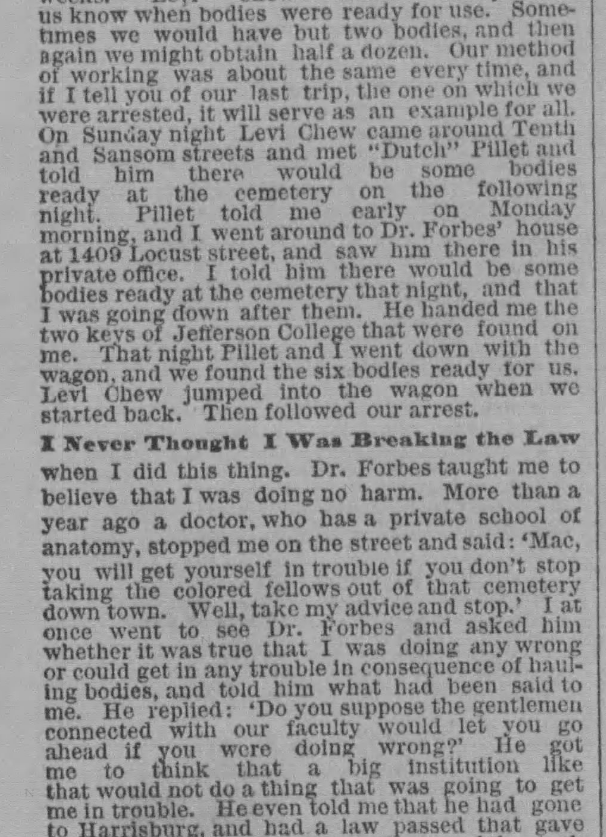
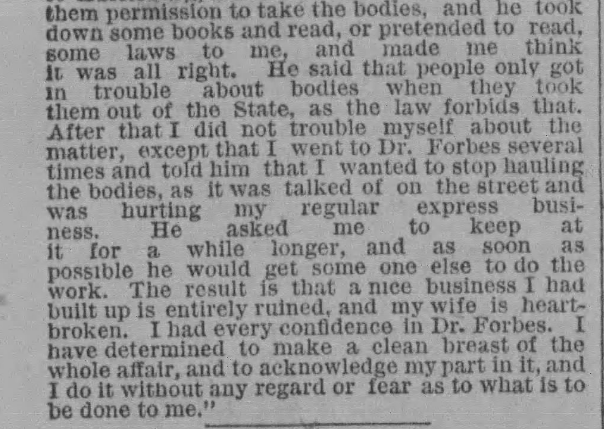
Posted By: Paul - Tue Jun 08, 2021 -
Comments (8)
Category: Crime, Death, Education, Medicine, Cemeteries, Graveyards, Crypts, Mortuaries and Other Funereal Pursuits, Nineteenth Century
An Experiment on Eye Process
From The Art and Science of Embalming (1896) by Carl Barnes.The illustration shows an experiment by the embalmer W.W. Harris to test the efficacy of injecting embalming fluid through needles inserted at the corners of the eyes. Harris showed that the fluid would come out the veins and arteries in the neck— and if the head were still attached to a body, would then presumably spread throughout the rest of the corpse.

Posted By: Alex - Sun Jun 06, 2021 -
Comments (2)
Category: Death, Experiments, Eyes and Vision
Electroplating the dead
In the late 1880s, reports began appearing in American papers about a French physician, Dr. Variot, who had perfected a method of electroplating corpses so that the dead could be "preserved in the form of bronze statuary".I suspect these reports were a journalistic hoax. For a start, I doubt this technique would work. Also, I can't find any reference to a Dr. Variot except in connection to the electroplating story.
More info at Atlas Obscura.


Text (and above images) from the Leavenworth Standard - Feb 9, 1891:
Before the apparatus is plunged in a galvanic bath the body has to be rendered a perfect electric conductor. For this purpose the operator either paints the corpse with a solution of nitrate of silver or he puts a powdered preparation of the same on the surface of the skin. The caustic penetrates the surface, and the skin turns an opaque color. Afterward the nitrate of silver has to be reduced or separated from its oxide, but this presents no great difficulty. The double framework is then placed in a reservoir, from which the air is exhausted by a pump, and vapors of white phosphorus dissolved in sulphur of carbon are introduced. This is a dangerous operation, as are all operations in which dissolved phosphorus plays any part. After the phosphoric vapors have reduced the nitrate of silver the corpse becomes a grayish white, and is a perfect facsimile of a plaster of Paris statue. The metallization is then very simple, being effected by a galvanic bath in the usual way.
The French capital is greatly excited over this method of making indestructible mummies. Should it come into favor metallized bodies may soon take the place of wax figures and statuary in museums, galleries and even private residences. Not only can the last expression of the deceased be preserved, but various poses produced, and by deft manipulation the countenance of the corpse changed to express almost any emotion. The body of the warrior may be made to assume a martial attitude. The dead preacher could be electroplated in the act of exhortation. Statesmen and heroes could bequeath their remains to a sorrowing nation, and coated with gold, silver or brass preside in person over their own monuments. In fact there is no end of practical or romantic purposes to which our plated bodies might be put, from the pointing of a moral to the adornment of a tale, and even to the portrayal of some striking episode in national life.

Posted By: Alex - Fri Jun 04, 2021 -
Comments (6)
Category: Death, Nineteenth Century
Alternate Accelerator
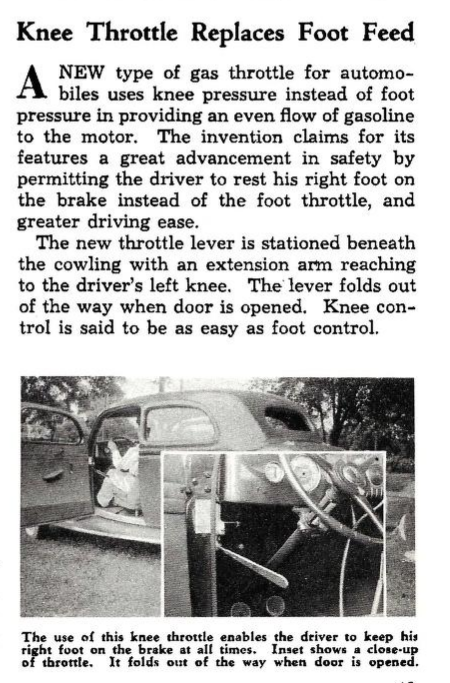
Is one's knee action as forceful, subtle and easy to control as foot action?
Source.
Posted By: Paul - Thu Jun 03, 2021 -
Comments (5)
Category: Death, Inventions, 1930s, Cars
Blood drips from ceiling
News that could be in a horror story: Down in El Paso, Texas, Ana Cardenas was recently woken by something dripping on her face. She turned on her light and discovered it was blood. And blood was also splattered on her walls.Turned out a man in the apartment above had died (of natural causes) and the blood from his decomposing body had eventually made its way through the floor into Cardenas's bedroom. Her ceiling fan was splattering the blood as it dripped into her room.
Posted By: Alex - Wed May 19, 2021 -
Comments (6)
Category: Death, Horror
Escaped Tiger, 1915 Version
The tale of the Houston Tiger is okay, but not a patch on the 1915 event.
Source: The Los Angeles Times Los Angeles, California 03 Oct 1915, Sun Page 11

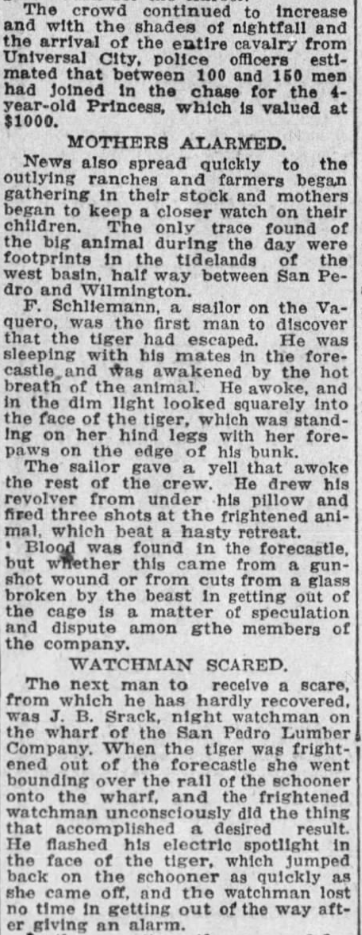
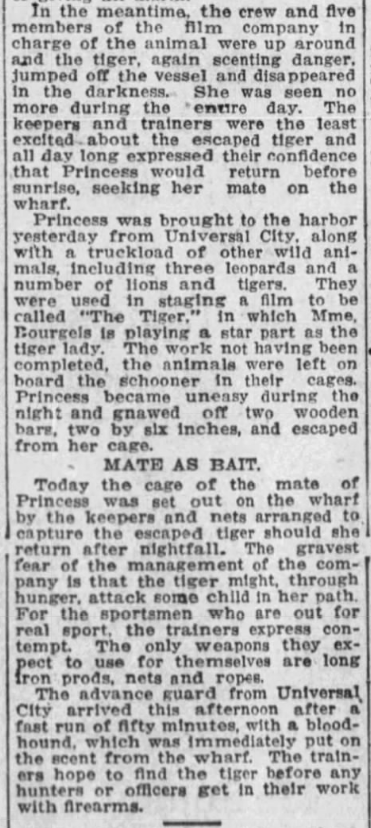
Posted By: Paul - Thu May 13, 2021 -
Comments (2)
Category: Animals, Death, Hollywood, 1910s
A Wake in Hell’s Kitchen
Posted By: Paul - Sat May 08, 2021 -
Comments (4)
Category: Death, Movies, Twentieth Century, Alcohol

| Who We Are |
|---|
| Alex Boese Alex is the creator and curator of the Museum of Hoaxes. He's also the author of various weird, non-fiction, science-themed books such as Elephants on Acid and Psychedelic Apes. Paul Di Filippo Paul has been paid to put weird ideas into fictional form for over thirty years, in his career as a noted science fiction writer. He has recently begun blogging on many curious topics with three fellow writers at The Inferior 4+1. Contact Us |

